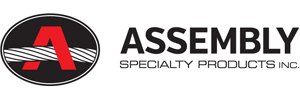OSHA Guide – Cranes and Derricks in Construction
MENU
- Introduction
- Employer Responsibilities
- Section 1400 – Scope
- Section 1401 – Definitions
- Section 1402 – Ground Conditions
- Sections 1403-1406 – Assembly and Disassembly
- Sections 1407-1411 – Power Lines
- Section 1412 – Inspections (with Section 1435(f)-Tower Crane Inspections) and Section 1436(p)-Derricks Inspections)
- Section 1413 – Wire Rope Inspection
- Section 1414 – Wire Rope – Selection and Installation Criteria
- Sections 1415 Safety Devices & 1416 Operational Aids
- Section 1417 – Operation
- Section 1418 – Authority to Stop Operation
- Section 1419-1422 – Signals
- Section 1423 – Fall Protection
- Section 1424 – Work Area Control
- Section 1425 – Keeping Clear of the Load
- Section 1426 – Free Fall and Controlled Load Lowering
- Section 1427 – Operator Qualification and Certification
- Section 1428 – Signal Person Qualifications
- Section 1429 – Qualifications of Maintenance & Repair Employees
- Section 1430 – Training
- Section 1431 – Hoisting Personnel
- Section 1432 – Multiple-Crane/Derrick Lifts
- Section 1433 – Design, Construction and Testing
- Section 1434 – Equipment Modifications
- Section 1435 – Tower Cranes
- Section 1436 – Derricks
- Section 1437 – Floating Cranes/Derricks and Land Cranes/Derricks on Barges
- Section 1438 – Overhead & Gantry Cranes
- Section 1439 – Dedicated Pile Drivers
- Section 1440 – Sideboom Cranes
- Section 1441 – Equipment with a Rated Hoisting/Lifting Capacity of 2,000 Pounds or Less
- Directory of States with Approved Occupational Safety and Health Programs
- Workers’ Rights
- OSHA Assistance, Services and Programs
- OSHA Regional Offices
- NIOSH Health Hazard Evaluation Program
Sections 1415 Safety Devices & 1416 Operational Aids
These sections require that cranes/derricks be equipped with certain types of safety equipment. Some types are called safety devices, while others are called operational aids. Safety devices must be in proper working order for the equipment to be permit- ted to operate. If an operational aid is not working properly, the equipment may still be operated for a limited time as long as certain alternative precautions are taken.
Note that section 1412 requires that safety devices and operational aids must be checked for proper operation during all shift inspections.
Safety devices and operational aids must not be used as a substitute for the exercise of professional judgment by the operator.
Safety Devices
The following safety devices are required on all equipment unless otherwise specified:
- Crane level indicator (except on portal cranes, derricks, floating cranes/derricks and land cranes/ derricks on barges, pontoons, vessels or other means of flotation)
- Boom stops (except for derricks and hydraulic booms)
- Jib stops (if a jib is attached), except for derricks
- Locks on foot pedal brakes
- Integral holding device/check valve on hydraulic outrigger jacks and hydraulic stabilizer jacks
- Rail clamps and rail stops for equipment on rails (except portal cranes)
- Horn (either built into the equipment or on the equipment and immediately available to the operator)
Operational Aids
These are divided into two categories that differ in the amount of time the equipment may operate before they are repaired. While an operational aid is not working properly, the temporary alternative measures specified in the standard must be taken. Category I aids must be repaired within seven calendar days after a deficiency occurs, while equipment may operate for 30 calendar days before a Category II aid is repaired. In both cases, additional time is permitted if a necessary part is ordered in a timely manner but is not received within the seven- or 30-day period.
Certain operational aids are only required on equipment manufactured after a specified date. In some cases, these are past dates that reflect when these devices began to be installed on equipment. In other cases, they are future dates that are intended to give manufacturers time to install the devices on new equipment.
Category I Operational Aids
- Boom hoist limiting device (required on equipment manufactured after December 16, 1969).
- Luffing jib limiting device.
- Automatic anti two-blocking device (required on telescopic boom cranes manufactured after February 28, 1992; lattice boom cranes manufactured after November 8, 2011; derricks manufactured after November 8, 2011; articulating cranes equipped with a load hoist manufactured after December 31, 1999; digger derricks manufactured after November 8, 2011).
- Automatic or warning-type anti two-blocking device (required on lattice boom cranes manufactured after February 28, 1992 and before November 8, 2011).
Note: Two-block protection is not required for lattice boom equipment used for dragline, clamshell (grapple), magnet, drop ball, container handling, concrete bucket, marine operations that do not involve hoisting personnel, and pile driving work.
Category II Operational Aids
- Boom angle or radius indicator (required on all equipment, except digger derricks manufactured before November 9, 2010)
- Jib angle indicator if the equipment has a luffing jib
- Boom length indicator if the equipment has a telescopic boom (unless the rated capacity is independent of the boom length)
- Load weighing and similar devices (required on equipment (other than derricks, articulating cranes, and digger derricks manufactured before November 8, 2011) manufactured after March 29, 2003 with a rated capacity over 6,000 pounds)
- Automatic overload prevention device, load weighing device, load moment (or rated capacity) indicator, or load moment (rated capacity) limiter (required on articulating cranes manufactured after November 8, 2011)
- Outrigger/stabilizer position (horizontal beam extension) sensor/monitor if the equipment has outriggers or stabilizers (required on equipment manufactured after November 8, 2011)
- Hoist drum rotation indicator if the equipment has a hoist drum not visible from the operator’s station (required on equipment manufactured after November 8, 2011)
NOTE: Articulating cranes need not be equipped with boom angle or radius indicators, jib angle indicators, or boom length indicators.

